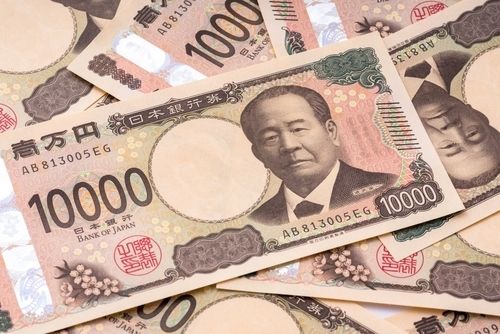Bank of Japan expected to hold interest rate at 0.50% amid US trade war uncertainty

The Bank of Japan is expected to hold interest rates at 0.50% in its May meeting.
The uncertainty related to the United States-inspired trade war will be at the centre of the decision.
The Japanese Yen could ease further with the BoJ’s anticipated decision.
The Bank of Japan (BoJ) will announce its decision on monetary policy after a two-day meeting on Thursday, and market participants widely anticipate policymakers will keep the benchmark interest rate on hold at 0.50%.
The focus will then shift to any signs of future monetary policy actions in the foreseeable future, alongside fresh economic projections, with the Japanese Yen (JPY) reacting in consequence.
What to expect from the BoJ interest rate decision?
As said, the Japanese central bank will likely maintain interest rates on hold at 0.50%, the highest level in 17 years. The BoJ delivered a 25 basis points (bps) hike in January amid progress towards their 2% inflation goal, but stayed pat in March.
Regarding projections, the BoJ forecasted 1.1% Gross Domestic Product (GDP) growth for FY 2025 and 1% for FY 2026 in January. Such a figure could suffer a revision amid the ongoing trade war, given that Japan is an export-dependent economy. Additionally, the median outlook for consumer inflation was 2.4% and 2% for the same two years.
Meanwhile, the United States (US)-inspired trade war continues, generating uncertainties about economic and inflation progress. Without progress in negotiations, Japan will likely see a contraction in exports and reduced capital investment, alongside an uptick in inflation. That means Japanese policymakers will likely opt to keep rates on hold until a clearer picture emerges.
Ahead of the announcement, Japanese Prime Minister Shigeru Ishiba announced in mid-April some emergency economic measures to alleviate any impact on industries and households affected by US levies. The package includes support for corporate financing and subsidies to lower petrol prices by 10 yen ($0.07) a litre (0.26 gallons), and partially cover electricity bills for three months from July.
Also, Japan's Economy Minister, Ryosei Akazawa, who is in charge of trade negotiations with the US, repeated that they expect the complete removal of levies. Even further, he clarified that the government is not considering sacrificing agricultural products for the sake of autos in the negotiations.
Finally, BoJ Governor Kazuo Ueda last week said the bank will continue to carefully monitor economic and price data in relation to interest rate policy. Ueda will hold a press conference after the announcement, and his words will be scrutinised for clues on future monetary policy decisions.
As a note of colour, the US published first-tier data on Wednesday. The ADP Employment Change report showed that the private sector added 62K new job positions in April, much worse than the 108K anticipated by market participants. The preliminary estimate of the US Q1 GDP also missed expectations, as the economy contracted at an annualized pace of 0.3% against the anticipated 0.4% expansion. The figures fueled speculation that the US faces a recession in the foreseeable future amid Trump’s tariffs, and financial markets turned risk-averse ahead of BoJ’s decision.
How could the Bank of Japan's interest rate decision affect USD/JPY?
Generally speaking, markets price in central bank’s decisions, meaning a decision in line with expectations should have a limited impact on the JPY. Policymakers are expected to repeat that they will remain data-dependent. Downward revisions to expectations, however, may weigh on the Japanese currency.
A scenario in which BoJ officials are optimistic about economic and inflation progress is quite unlikely, but it should result in a firmer JPY. Considering that, the USD/JPY will edge lower after BoJ’s decision.
Valeria Bednarik, FXStreet Chief Analyst, says: “The USD/JPY pair hovers around 143.00 in the American session before the BoJ’s announcement, advancing for a second consecutive day, but the bullish potential seems well-limited. In the daily chart, a bearish 20 Simple Moving Average (SMA) provides dynamic resistance at around 143.70, while technical indicators aim north, although within negative levels and with uneven strength. Even further, the 100 and 200 SMAs keep heading lower, far above the current level, reflecting the dominant bearish trend. A recent peak at 144.02 comes as the next relevant level to watch, with a steady advance above it required to anticipate a bullish extension in the following sessions.”
Bednarik adds: “Should the BoJ deliver a hawkish message, the risk for USD/JPY turns to the downside, with the 142.00 mark providing immediate support, ahead of the April 23 daily low at 141.35. Additional selling pressure exposes the year low at 139.88.”
* The content presented above, whether from a third party or not, is considered as general advice only. This article should not be construed as containing investment advice, investment recommendations, an offer of or solicitation for any transactions in financial instruments.


